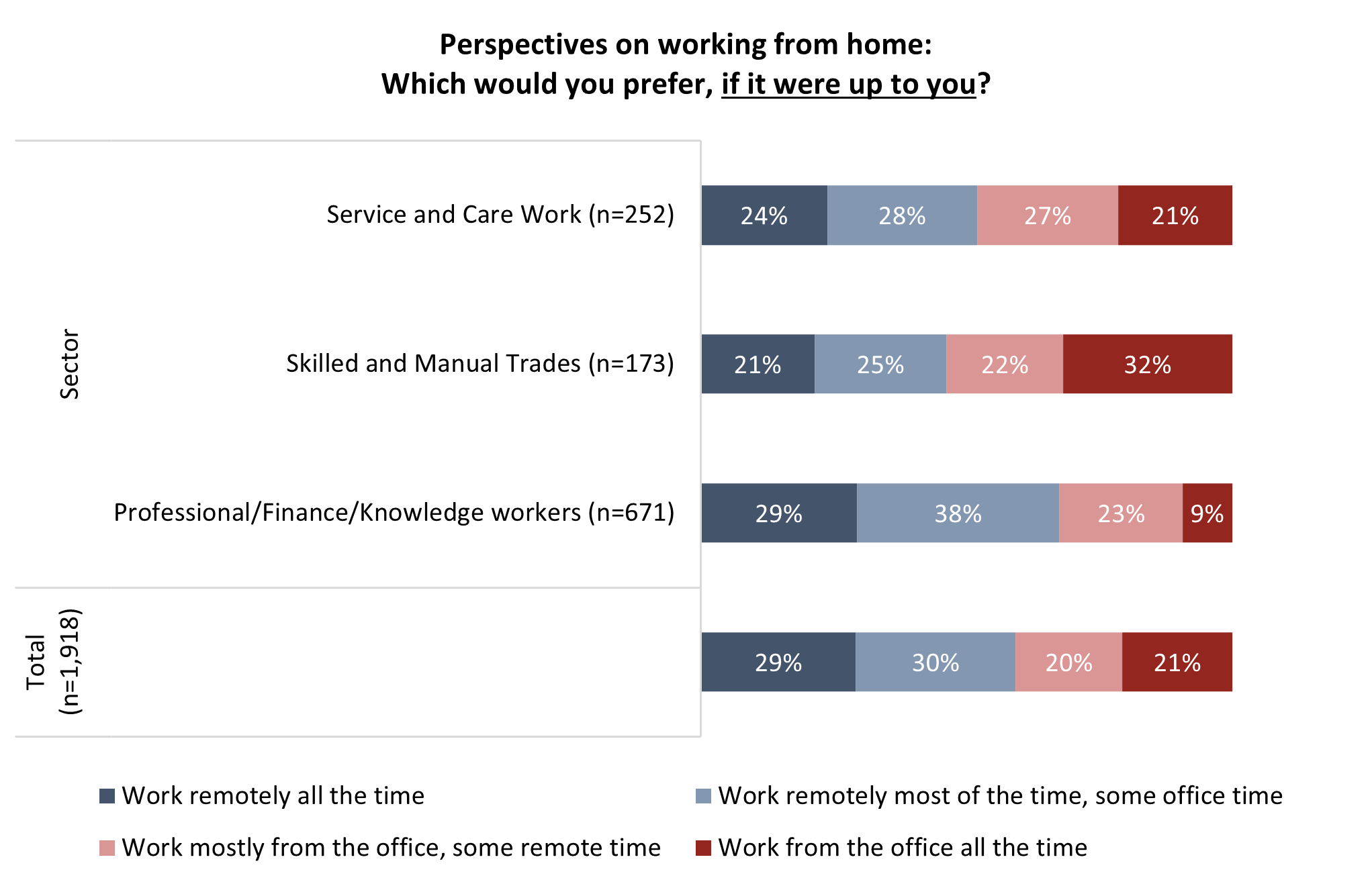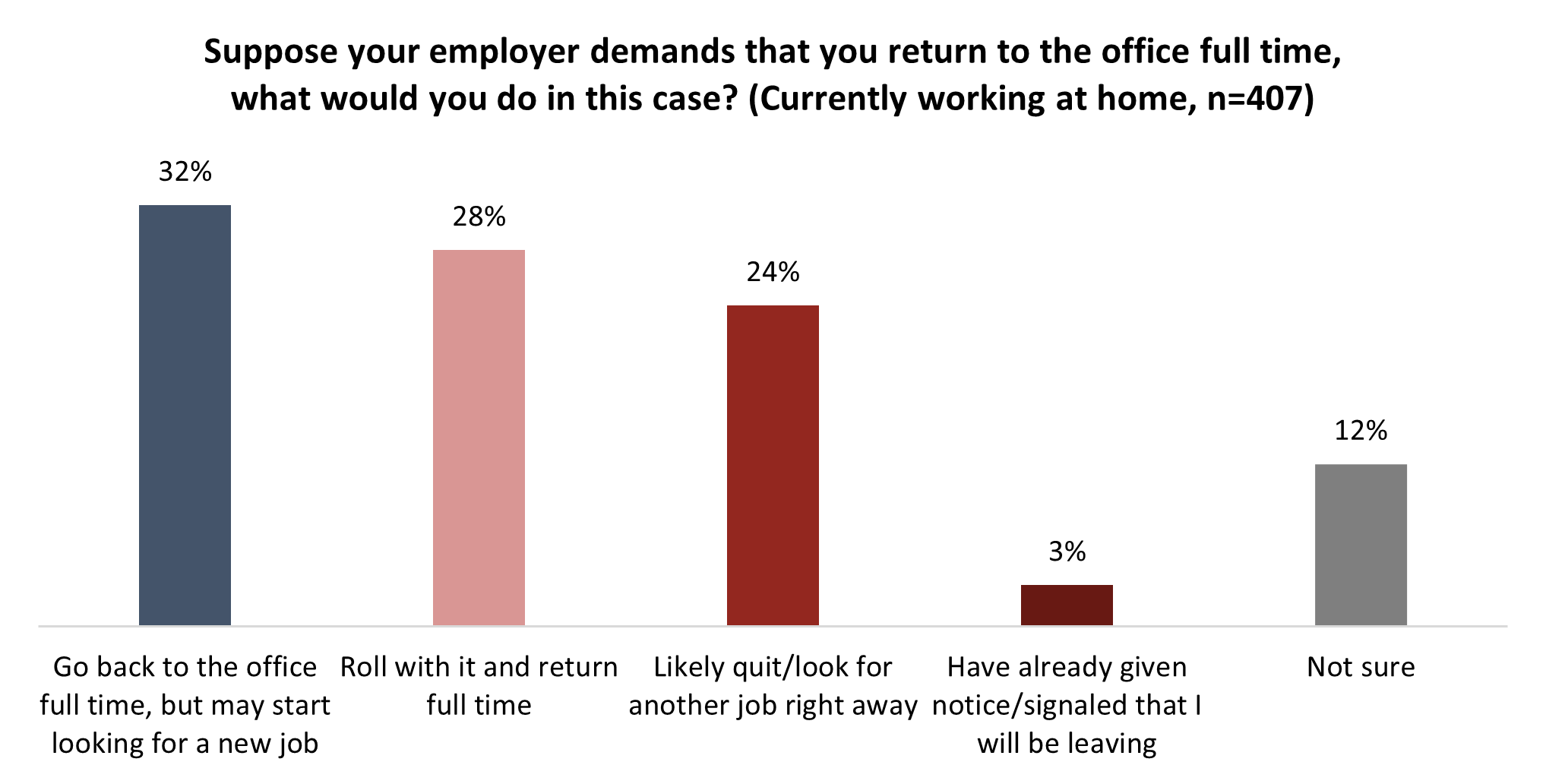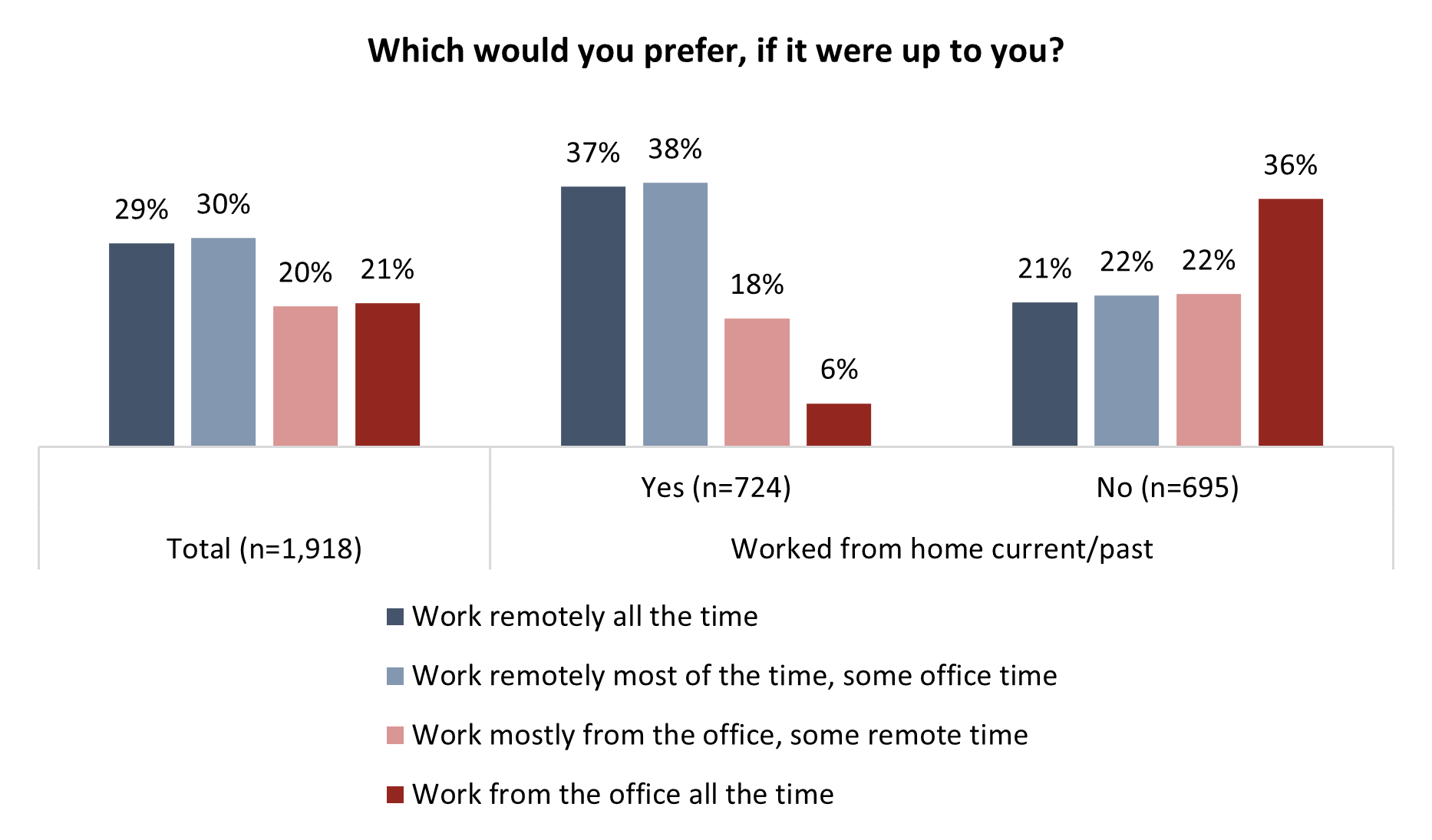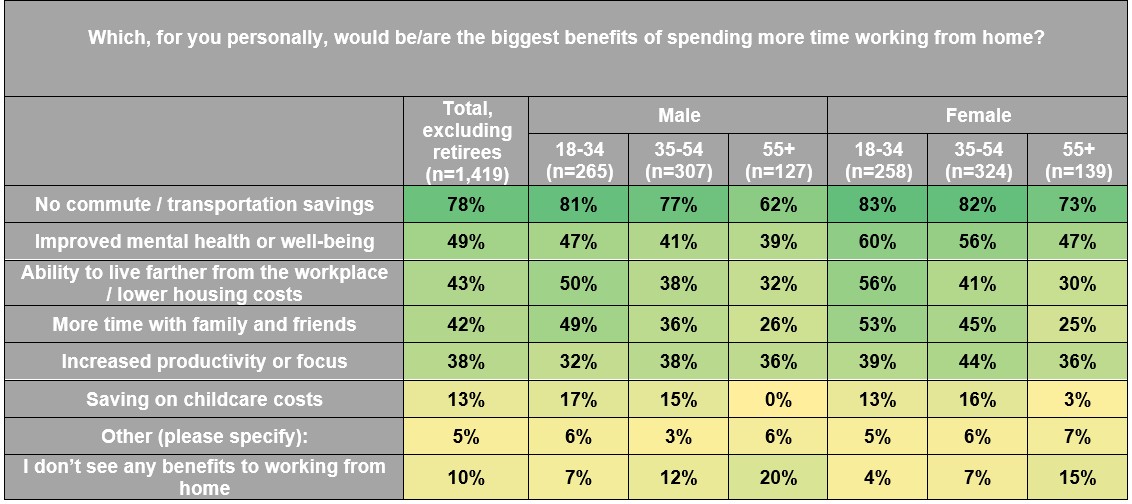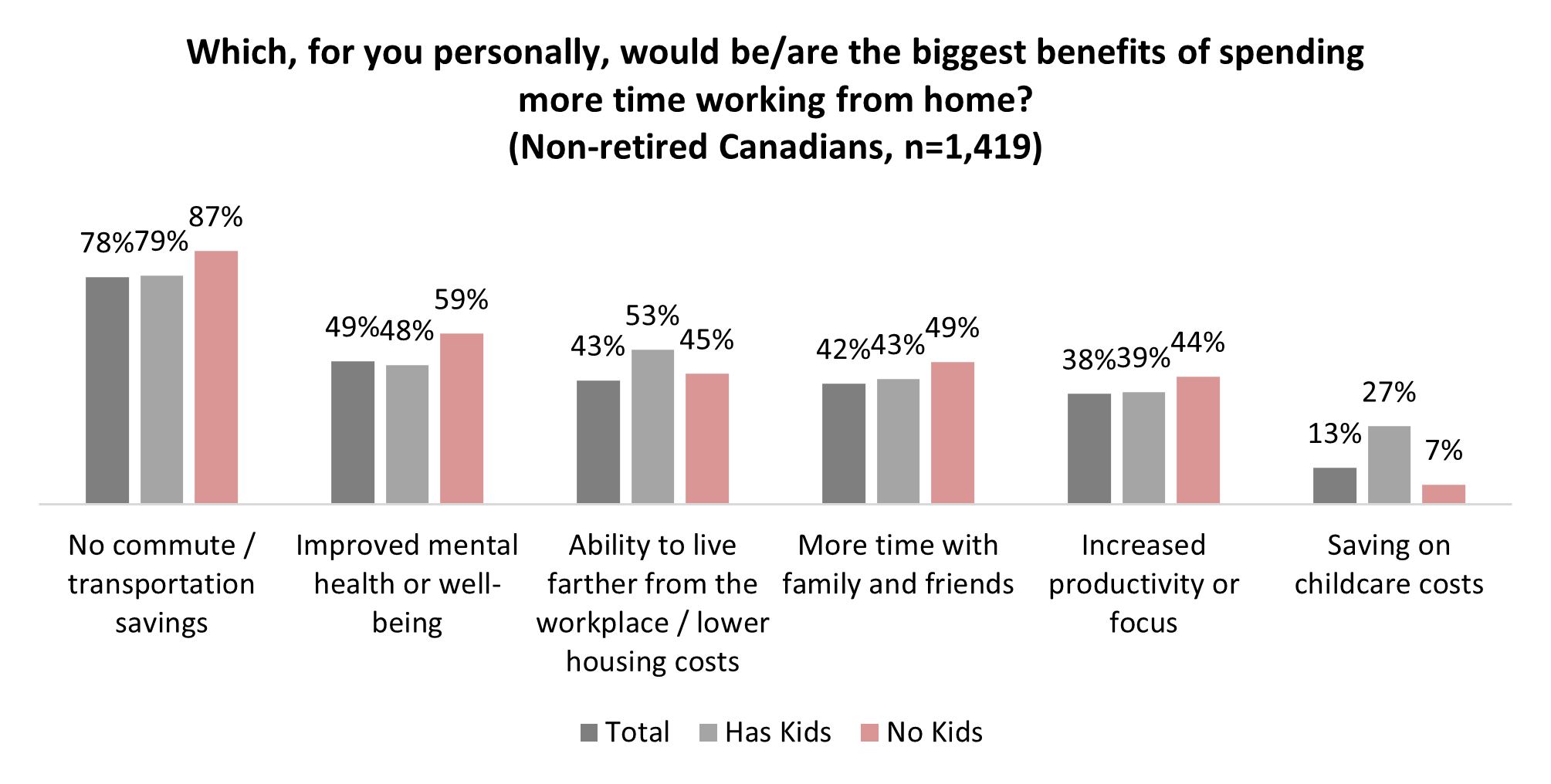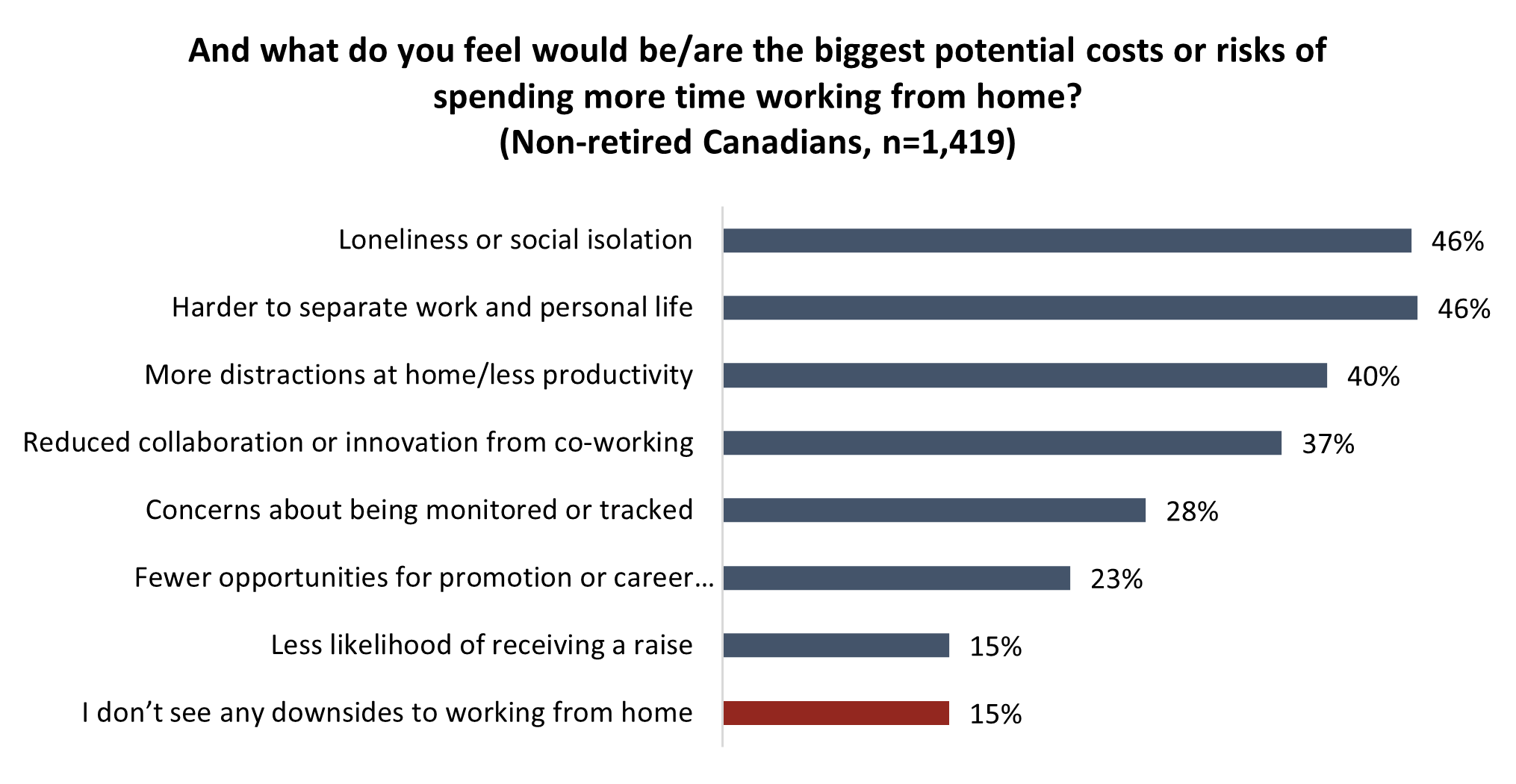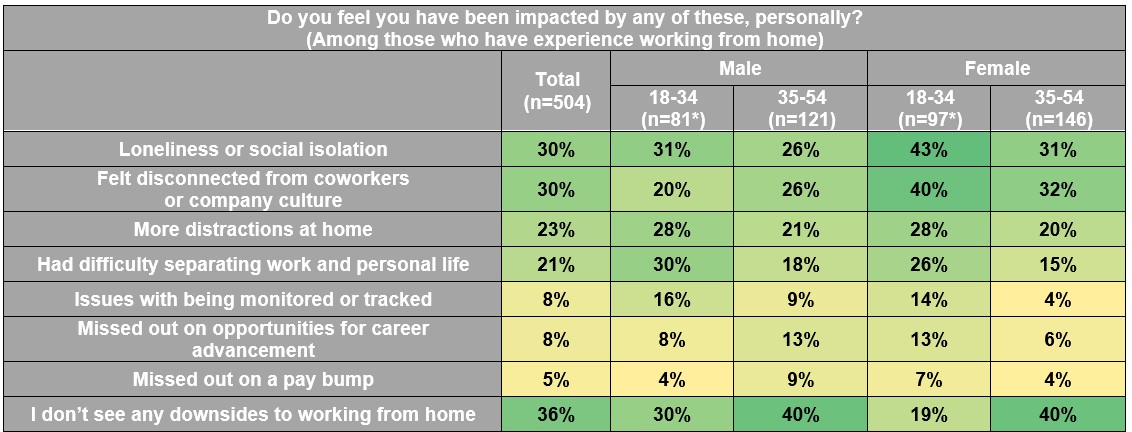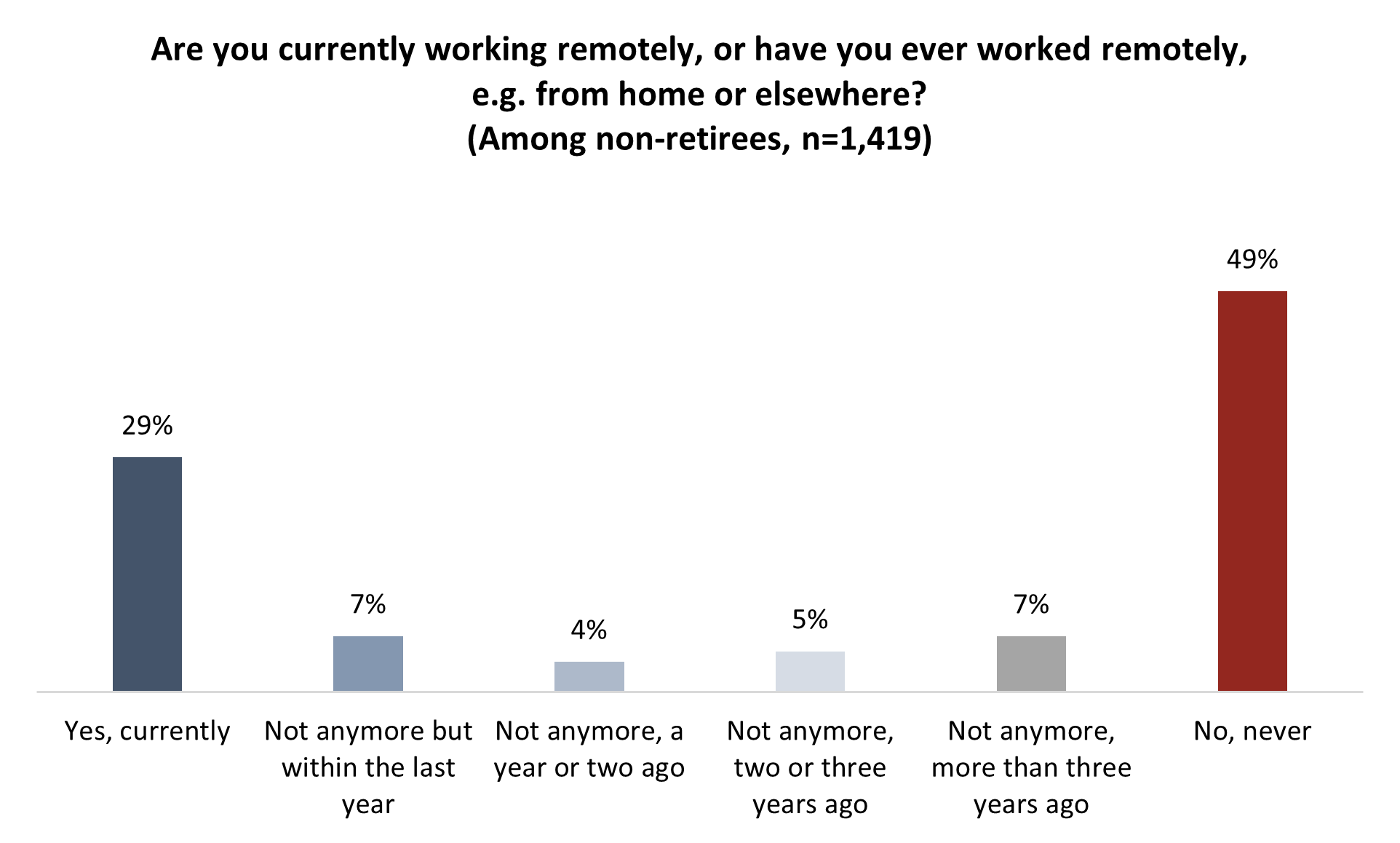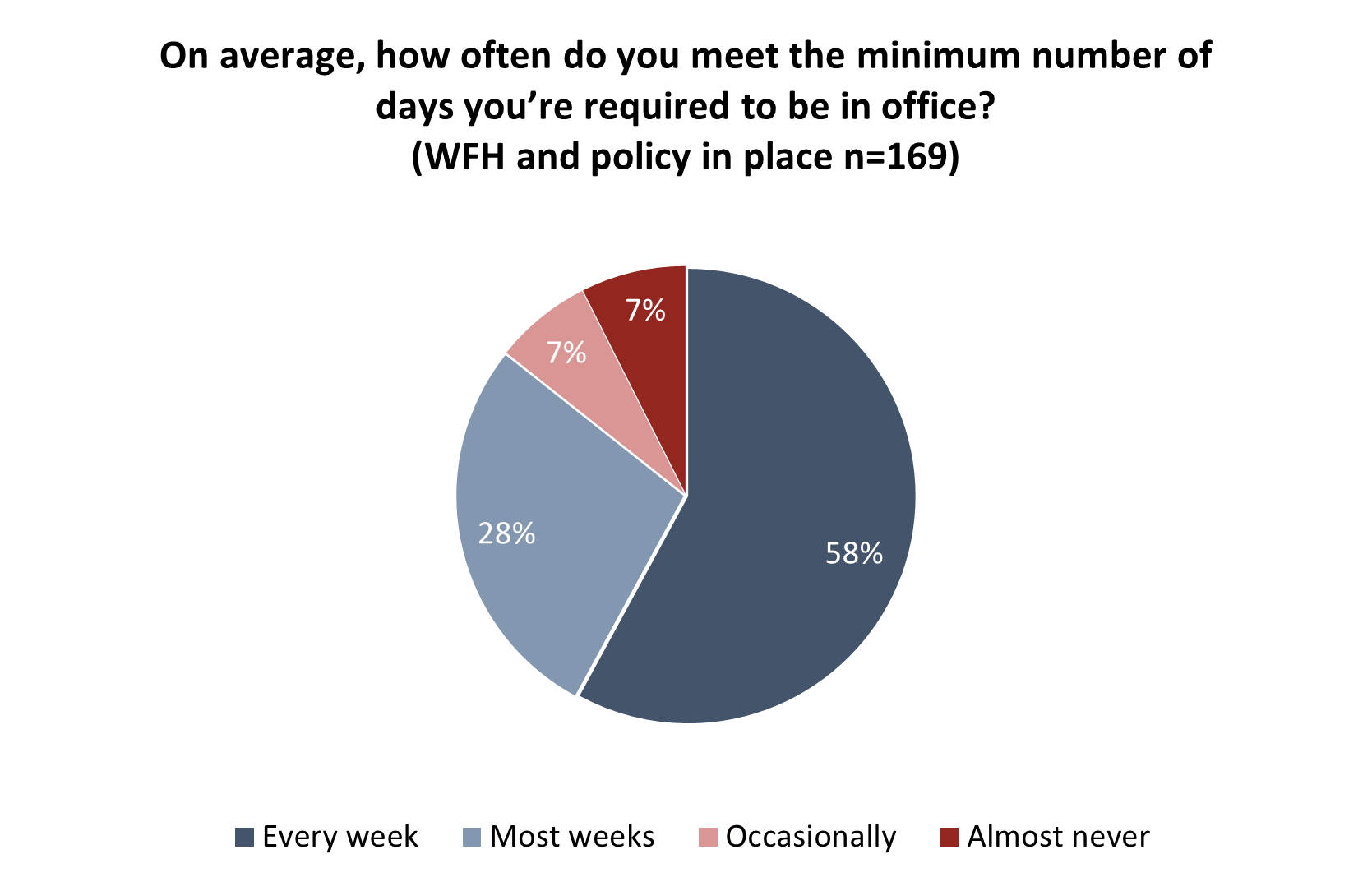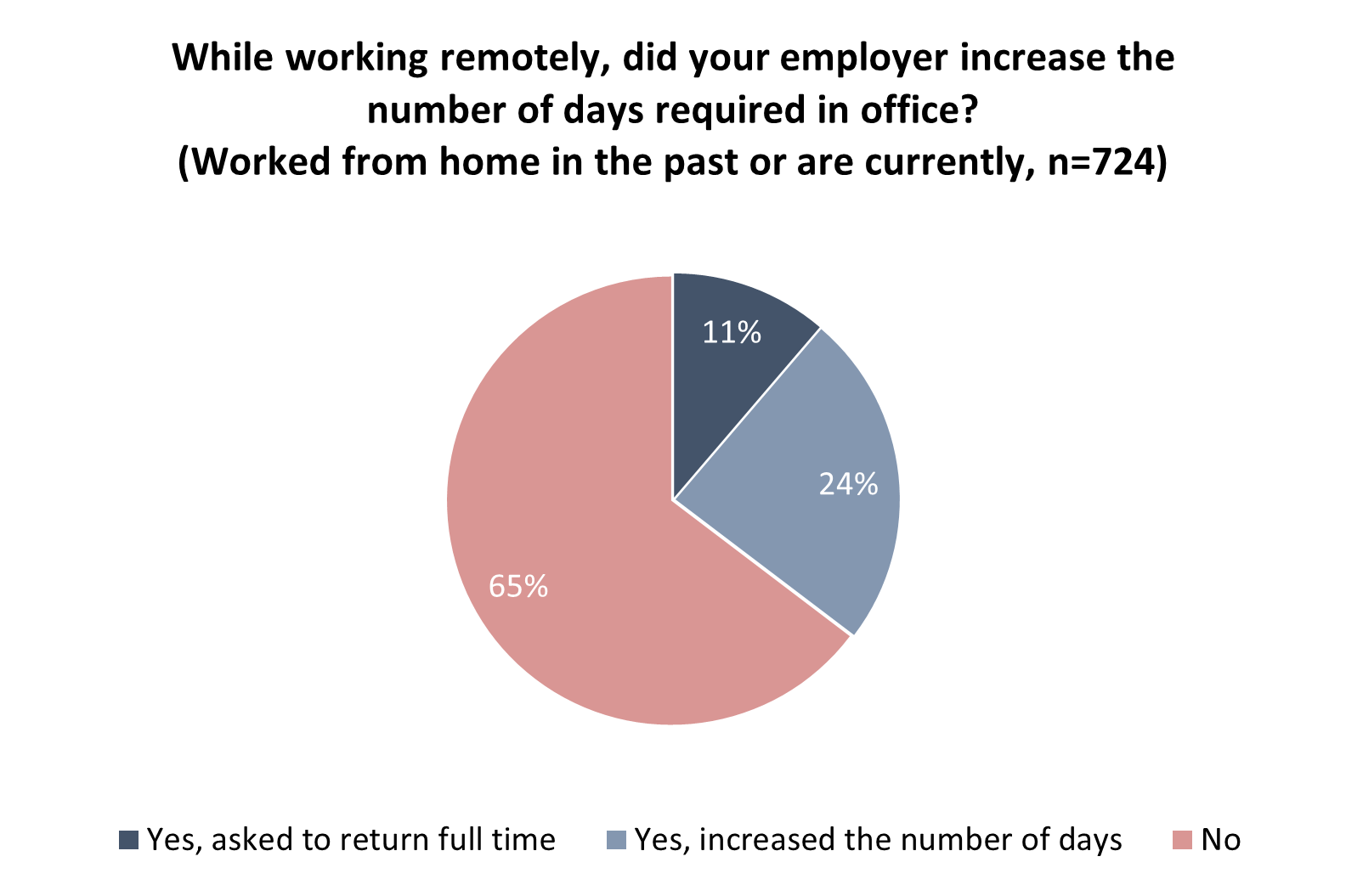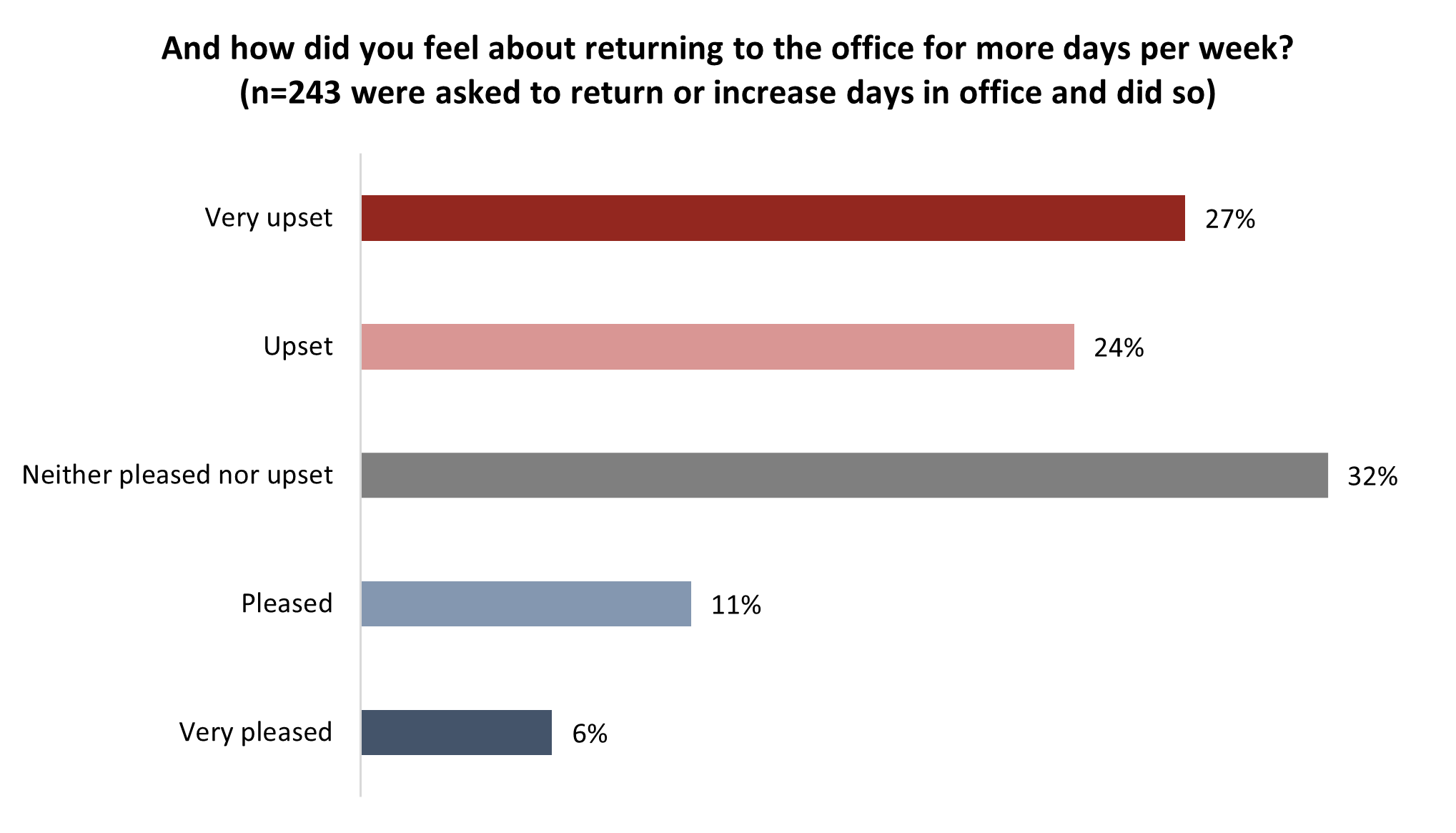Just nine per cent of professional/finance/knowledge sector workers would choose full-time in office
July 28, 2025 – With a majority of Fortune 100 companies now requiring desk workers to be fully in office, and major banking institutions like TD, RBC, and BMO upping the required days in office, a faceoff is setting up among workers who evidently prefer to stay at home, and employers who want them back on site.
New data from the non-profit Angus Reid Institute finds three-in-five Canadians (59%) saying they would prefer to spend the majority of their working time at home if it were possible. While this isn’t an option for many, those who’ve experienced it in the past clearly have an affinity. Among those who have worked from home in the past or are currently, the number who prefer most of their time in the home office jumps to three-quarters (76%). Technology, knowledge economy and financial workers, many of the so-called white-collar workers who are under increasing pressure to return are also much more likely to say they would rather not. Seven-in-10 (68%) say they would rather work from home most of the time, and just nine per cent show a preference for full-time, on-site work.
Among those who have been asked to return, sentiments are divided, and compliance is hardly uniform.
While most who have worked from home say they weren’t asked to return to work or increase the number of days on-site (65%), of those who were asked, seven-in-10 (72%) say they went back and followed the policy. Five per cent say they quit, while one-quarter (23%) agreed to the request, but admit that they often spend fewer days than required in office – an issue federal government departments have noted in recent months.
Those who remain entrenched at home, however, are much more resistant to a return to office. Just three-in-10 (28%) say that if they were asked by their current employer to return that they would do so without any complications. The largest group (32%) say they would return but start considering other options, while one-quarter (24%) say they would likely quit outright.
More Key Findings:
Those who did return are far from pleased. Indeed, one-quarter say they’re “very upset” (27%) while a similar number are “upset” (24%) about a return to office. One-in-three (32%) say it made no real difference to them, while 17 per cent were pleased.
Working age Canadians, regardless of whether they are working from home currently, say the biggest perceived benefits would be not having to commute (78%) and improved mental health (49%). One-quarter of those with children at home (27%) say savings in childcare would be a benefit.
Of those who have worked from home, the biggest challenges have been social isolation (30%) and disconnection from co-workers (30%). Young women are more likely to say they felt isolated (43%).
More than half of Canadians younger than 65 (57%) say they believe workers are just as, if not more, productive at home compared to on site. Among those with experience working from home this is overwhelmingly the view (73%).
Half of working age Canadians now say they have worked from home at some point (51%) with 29 per cent saying they are currently doing this.
INDEX
Part One: At home or in office? What would Canadians prefer if they had their choice?
Commute savings, improved mental health are biggest perceived benefits of WFH
Loneliness and lack of separation from personal life are biggest drawbacks
Real experiences find loneliness and isolation the biggest harm
Part Two: A look at WFH in 2025
Half have now worked from home at some point
Hybrid model popular for those who currently WFH
How many days in office are employers asking for?
Three-in-five always meet the minimum
Most haven’t been asked to return to office
Few quit when they were asked to return to office
Half who went back were displeased, few were happy
Part One: At home or in office? What would Canadians prefer if they had their choice?
The pendulum has begun to swing away from remote work. In the past two months, some of Canada’s biggest banks – TD Bank, Royal Bank of Canada, Bank of Nova Scotia, and the Bank of Montreal – have requested their employees return to the office for at least four days a week in the fall. The expectation is this is the tip of the spear for the push to return office employees into desks in corporate towers across the country, as the banks, some of the largest employers in the country, often “set the tone” for “in-office attendance”.
Hybrid work had become much more the norm in the wake of the pandemic, when many companies allowed employees to work from home to avoid the spread of COVID-19. But business leaders remain concerned on lost opportunities for collaboration, communication and mentorship when employees are spread out rather than concentrated in offices.
The push for more in-office work represents a changing business environment and perhaps as well a changing job market as unemployment slowly creeps up, and job vacancies slowly dwindle down, granting employers more sway to set terms over employees.
The balance shifting to more in-office time runs against the preferences of working Canadians. Three-in-five (59%) say they would prefer to work either entirely remotely (29%) or more remote than in-office (30%). One-in-five (20%) say they prefer some remote time but more office time, while a similar sized group say they want to be in the office all the time (21%).
The preference for remote work is much higher among women. The gender imbalance in housework remains, with women taking on more child-raising responsibilities than men as well as more chores in the house in general. The option for remote work might make taking on those responsibilities for women. Approaching two-in-five (37%) women between the ages of 35- to 54-years-old, the age group most likely to have children in the home, say they’d prefer to be working remotely all the time. Women under 55 are also the least likely to prefer to be in the office for the full work week:
Getting a taste of the work-from-home life evidently goes a long way in increasing preference to continue doing so. Among those who have never worked from home two-in-five (43%) say they would like to do so most of the time. For those who have worked from home previously or are doing so now this rises to 76 per cent:
This preference is particularly acute among those most under pressure to return to work. For those who work in a professional environment, banking or financial work, or another area of the knowledge economy, just nine per cent say they would prefer to be in office or on-site full time.
Commute savings, improved mental health are biggest perceived benefits of WFH
The burden of commuting into an office was a common complaint among Reddit users reacting to the announcement that TD Bank would be following other banks in requiring its employees to be in the office four days a week. Four-in-five (78%) Canadians in the work force cite transportation savings as one of the biggest benefits to working from home.
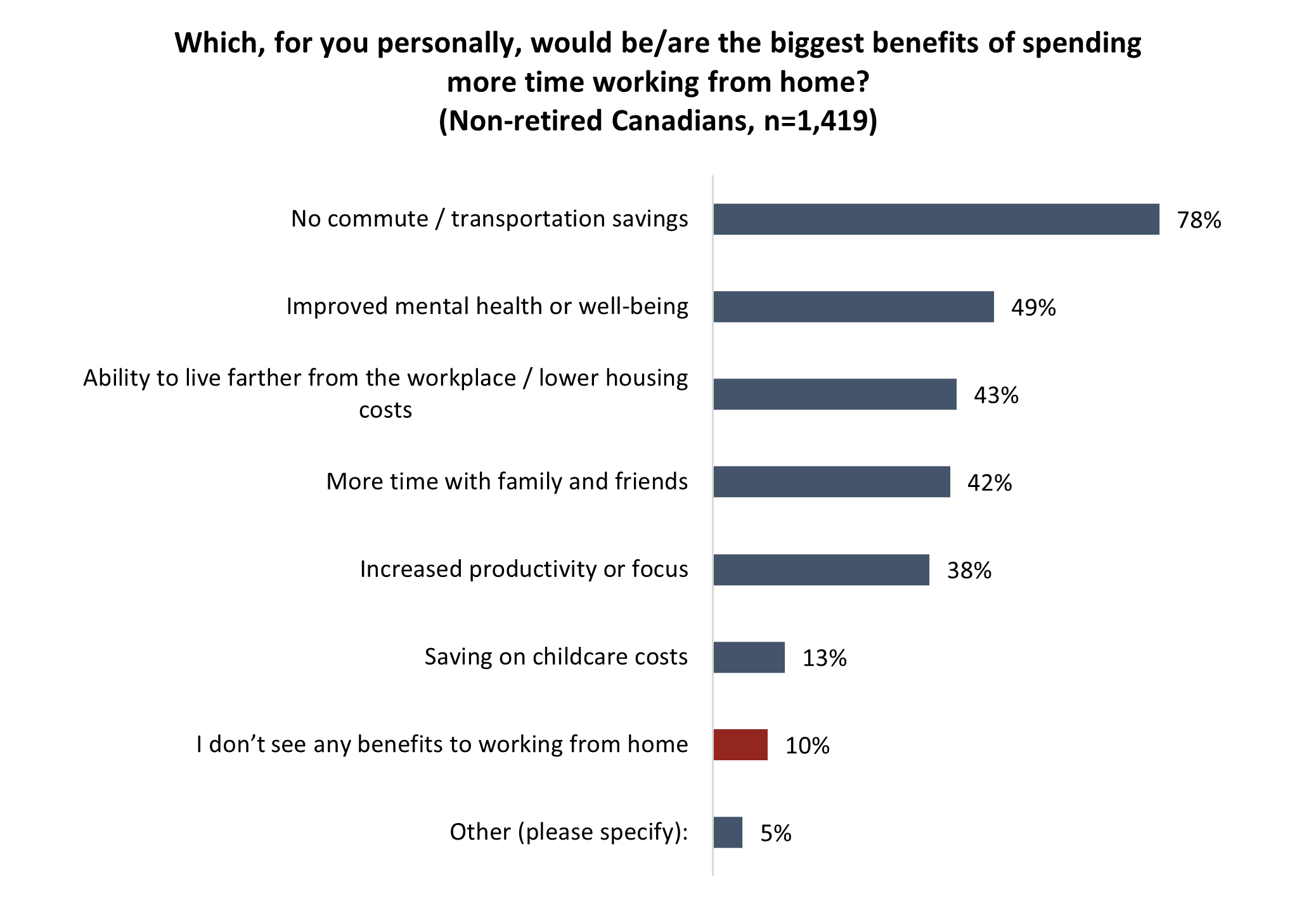 Half (49%), including three-in-five young women (60%), say remote work comes with improved mental well-being.
Half (49%), including three-in-five young women (60%), say remote work comes with improved mental well-being.
With Canada amid a housing affordability crisis, more than two-in-five (43%) see the appeal of more housing options further from the workplace as an upside to spending less time in the office. This level reaches half or higher among young men and women.
More time with family and friends (42%), and increased productivity (38%) are also benefits to large groups of Canadians.
There is one massive variance between demographics evident when it comes to benefits – parent vs non-parent views of childcare costs. One-in-eight (13%) see potential savings on childcare costs as an upside to working from home, but this rises to 27 per cent among those with children at home, at one-in-three for those with children younger than five (see detailed tables).
Loneliness and lack of separation from personal life are biggest drawbacks
There is less agreement on the challenges of working from home. Social isolation (46%) and the lack of division between work and personal life (46%) are chosen by more than two-in-five. A similar number also believe there are more distractions at home than in the office (40%). Nearing as many share the concerns of many corporate higher-ups on the reduced opportunity for collaboration (37%).
For 18- to 24-year-olds, an age group who came of age during the pandemic and saw many in-person social opportunities replaced with screentime, social isolation is a higher concern (56%) than for other age groups. They are also the least likely to prefer full time remote work (19%, see detailed tables).
One-in-seven (15%), including one-quarter of those older than 54, say they don’t see any downsides to working from home:
Real experiences find loneliness and isolation the biggest harm
Among Canadians with experience working from home at some point in their career, three-in-10 (30%) have felt disconnection and loneliness. These sentiments are particularly acute among younger women. One-in-five say they experienced “disconnection” from coworkers (23%), more distractions at home (22%) and difficulty separating their work life from their personal life (21%). Notably, younger workers are also more likely than those 35+ to say that they have concerns about having their activities tracked.
*Smaller sample sizes, interpret with caution
Those who have worked from home far more likely to say they’re more productive
Generally speaking, Canadians of working age are largely sold on home office productivity. More than half (57%) say they believe workers are just as, if not more, productive at home compared to on site. Among those with experience working from home this is overwhelmingly the view.
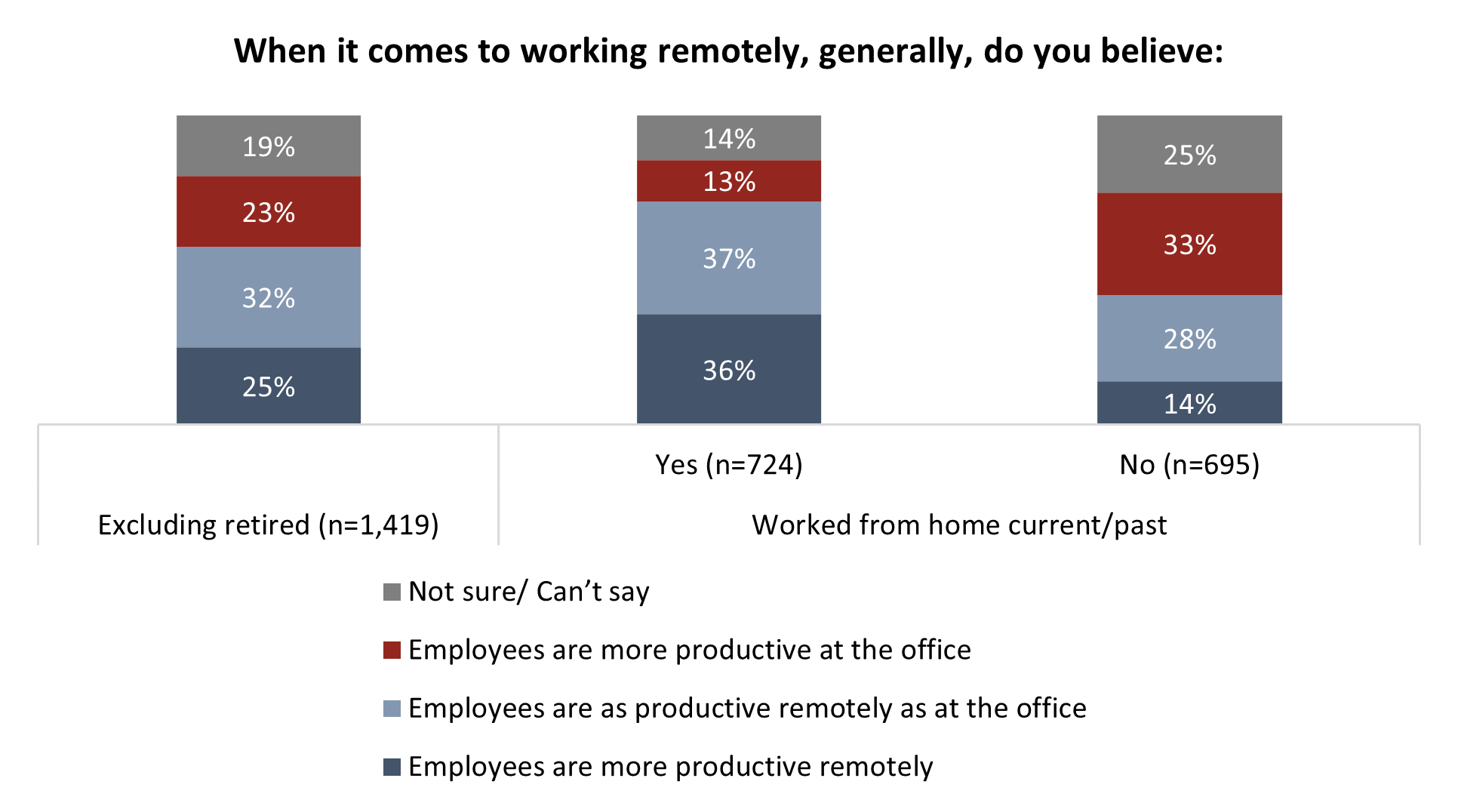 Part Two: A look at WFH in 2025
Part Two: A look at WFH in 2025
Half have now worked from home at some point
At the height of the pandemic, 40 per cent of Canadians in the work force were working most of their hours from home. This was a remarkable change from the seven per cent of Canadians who were doing so in 2016. Since the end of pandemic restrictions, the number has fallen. According to the most recent data from Statistics Canada from November 2023, 20 per cent of Canadians now work most of their time at home.
Within this sample of working age Canadians, three-in-ten (29%) say they currently work remotely for at least part of the work week, while a further 23 per cent say they have done so at some point in their career. Half (49%) of Canadians have no experience working remotely.
Hybrid model popular for those who currently WFH
Of the 29 per cent of Canadian workers who are currently working from home, approaching three-quarters (72%) say they are entirely remotely (42%) or work more of their week out of the office than in (30%), roughly aligning with the 20 per cent figure from November 2023 from Statistics Canada.
Three-in-ten (28%) are either splitting time between remote and in-office work (12%), or spending more workdays on-site than out of office (16%):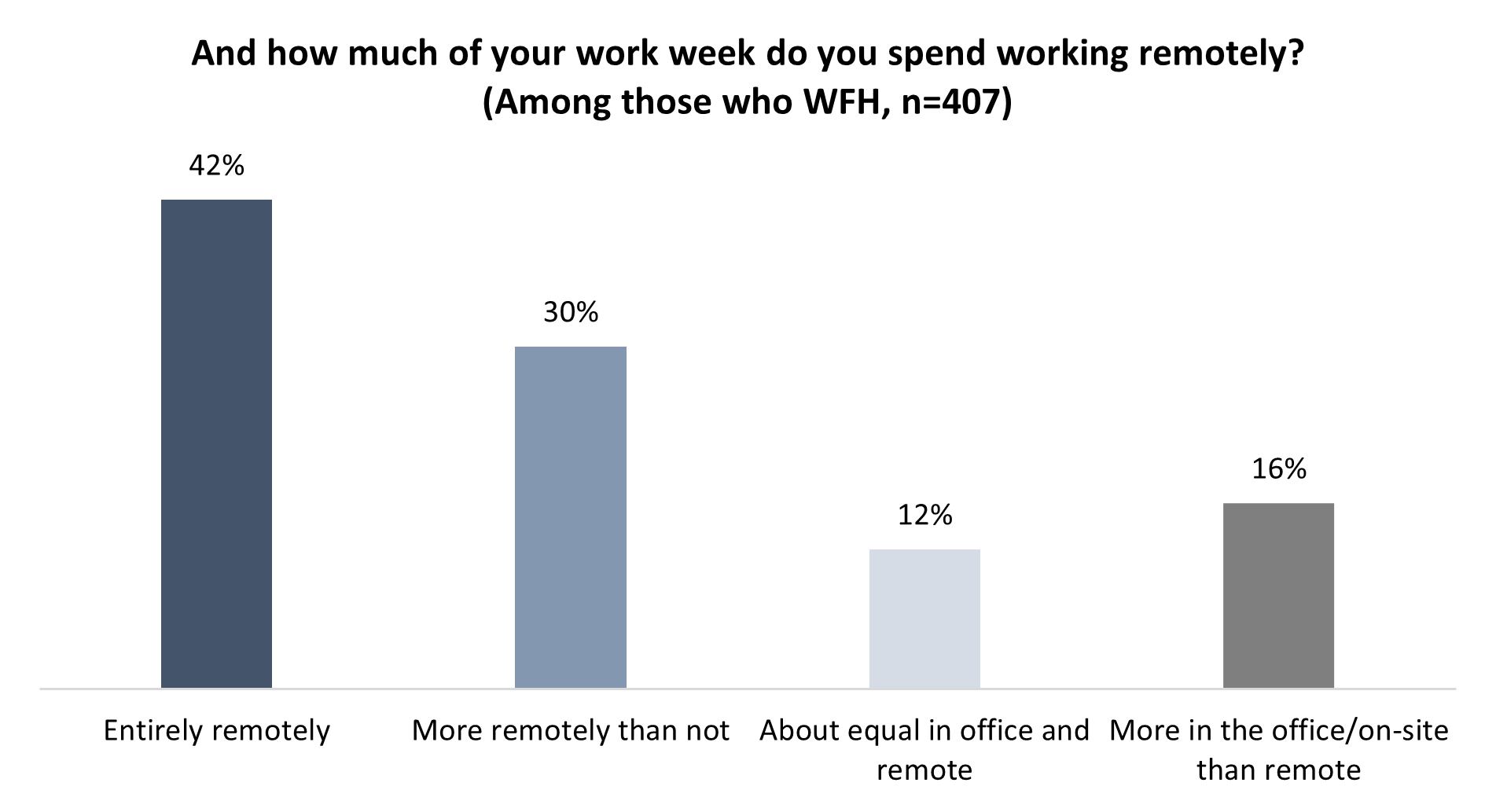 Office policies have been evolving since the pandemic, as noted in the previous section, with employers now much more likely to require more in-office days than in the earlier post-pandemic years. Among the Canadians who currently work in a hybrid situation, 35 per cent say their employer requires them to be in office for more than half the work week. A similar sized group of 38 per cent say their employer only requires one or two days from them on-site. Three-in-10 (28%) work in hybrid situations where there is no set policy on how many days they are required in office.
Office policies have been evolving since the pandemic, as noted in the previous section, with employers now much more likely to require more in-office days than in the earlier post-pandemic years. Among the Canadians who currently work in a hybrid situation, 35 per cent say their employer requires them to be in office for more than half the work week. A similar sized group of 38 per cent say their employer only requires one or two days from them on-site. Three-in-10 (28%) work in hybrid situations where there is no set policy on how many days they are required in office.
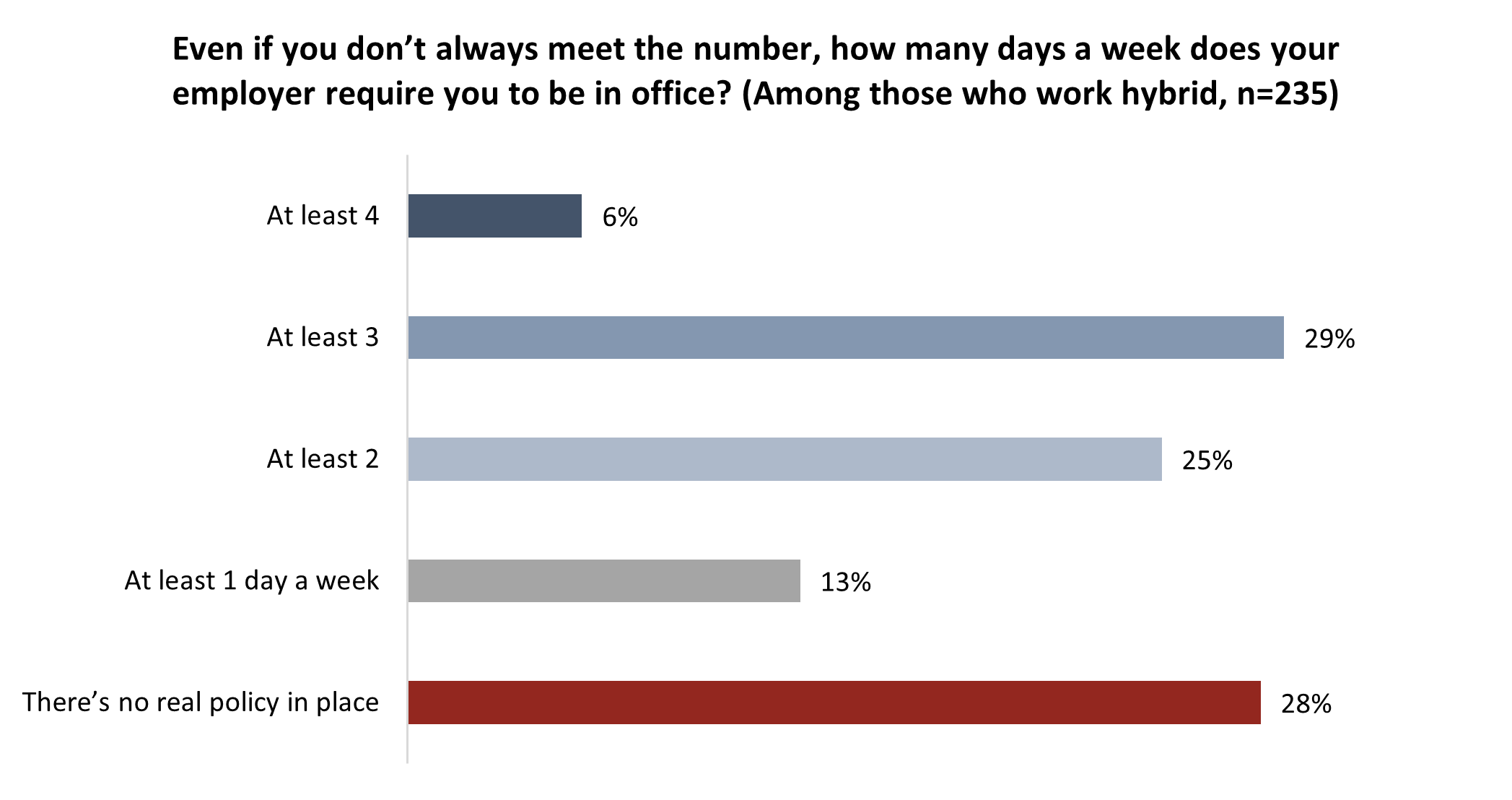 Three-in-five always meet the minimum
Three-in-five always meet the minimum
While the requirement is one part of the equation, whether employees follow it is another. In February, the Canadian Press reported that in three of the federal government’s largest departments – the Department of National Defence, Canada Revenue Agency and Employment and Social Development Canada – the compliance rate was between 60 per cent and 80 per cent on average, but could dip as low as 31 per cent depending on the month.
Among Canadians who work from home and whose employer has set a minimum day requirement for in-office work, three-in-five (58%) say they always follow the policy, three-in-10 (28%) say they mostly do, while seven per cent say they only do so occasionally. Fewer than one-in-10 (7%) say they are almost never in the office as much as their employer requires them to be.
Most haven’t been asked to return to office
The experience of employees at many of Canada’s major banks is not common among Canadians who have worked from home at some point in their career. Two-thirds (65%) say they have not been asked to work more days in the office than they had agreed to, while one-third (35%) were either asked to return full time (11%) or increase the portion of the work week they spent on-site:
Few quit when they were asked to return to office
Those who were asked to go back for more days overwhelmingly complied (72%). One-quarter (23%) agreed to go back, but don’t meet the minimum required days in office, while few (5%) quit: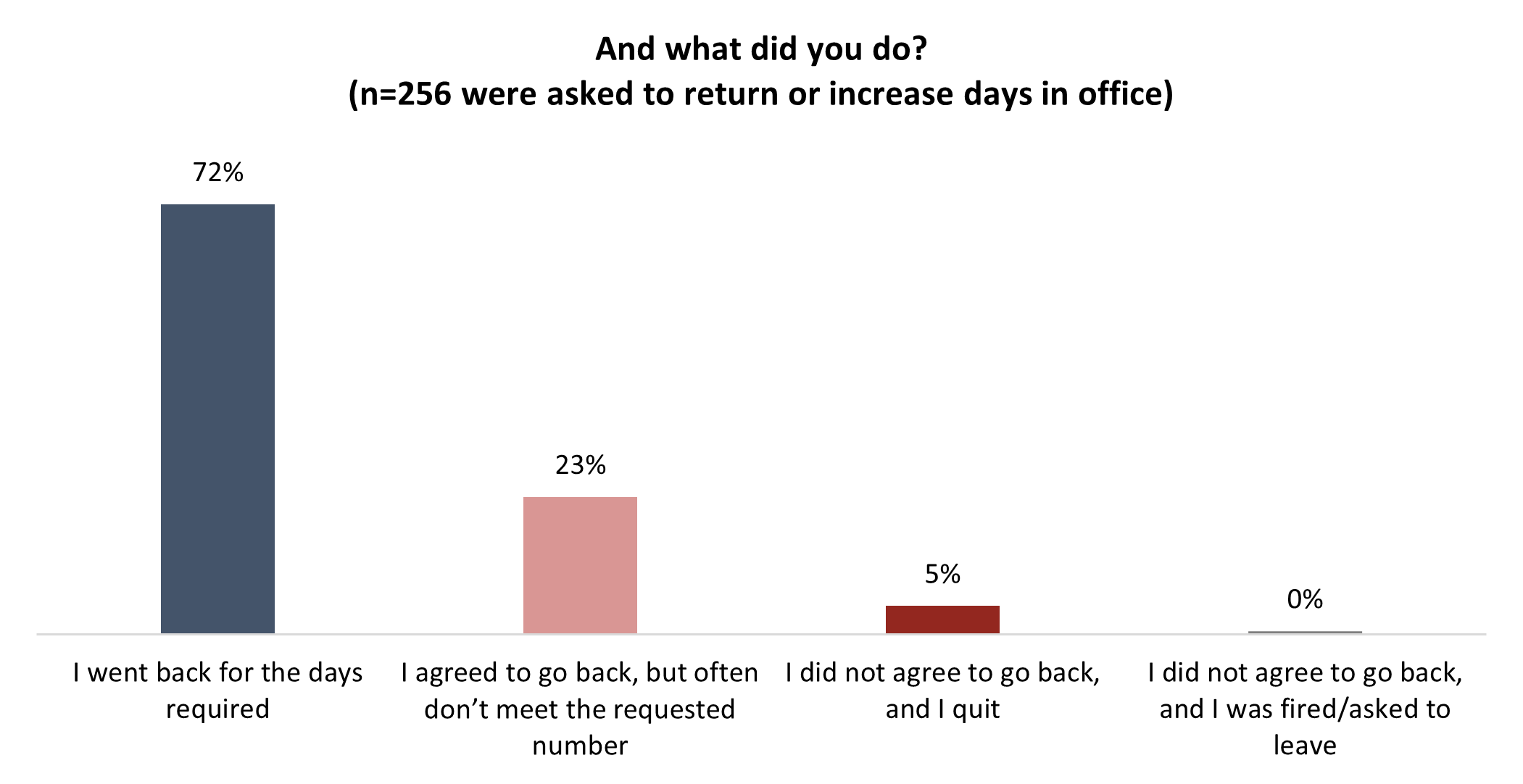 That said, the story among those who are still currently working at home is evidently more precarious for employers. Just three-in-10 (28%) say that if they were asked now by their employer to return that they would do so without any complications. The largest group (32%) say they would go back but start considering other options, while one-quarter (24%) say they would likely quit outright:
That said, the story among those who are still currently working at home is evidently more precarious for employers. Just three-in-10 (28%) say that if they were asked now by their employer to return that they would do so without any complications. The largest group (32%) say they would go back but start considering other options, while one-quarter (24%) say they would likely quit outright:
Half who went back were displeased, few were happy
The concern for employers is how employees will react to being asked to spend more time in office than they would prefer. Half (51%) who were asked to spend less of the work week working from home say they were upset by their employers’ request. Fewer than one-in-five (17%) reacted positively:
METHODOLOGY
The Angus Reid Institute conducted an online survey from July 18 – 22, 2025, among a randomized sample of 1,918 Canadian adults who are members of Angus Reid Forum. The sample was weighted to be representative of adults nationwide according to region, gender, age, household income, and education, based on the Canadian census. For comparison purposes only, a probability sample of this size would carry a margin of error of +/- 1.5 percentage points, 19 times out of 20. Discrepancies in or between totals are due to rounding. The survey was self-commissioned and paid for by ARI. Detailed tables are found at the end of this release.
For detailed results by age, gender, region, education, and other demographics, click here.
For PDF of full release, click here.
For questionnaire, click here.
MEDIA CONTACTS:
Shachi Kurl, President: 604.908.1693 shachi.kurl@angusreid.org @shachikurl
Dave Korzinski, Research Director: 250.899.0821 dave.korzinski@angusreid.org


